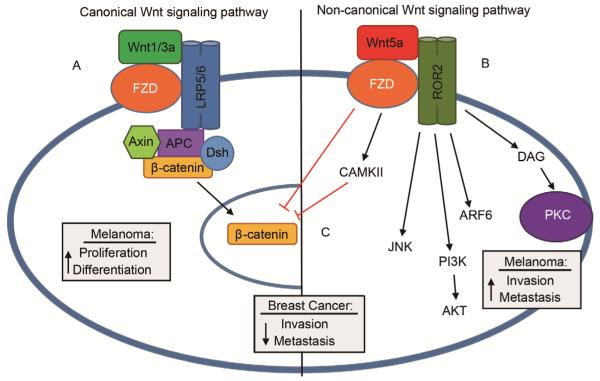Figure 2.
The canonical and non-canonical Wnt pathways have differing effects in cancer. A, Wnt1/3 binds the G-protein coupled receptor Fzd and the tyrosine kinase receptors LRP5/6 to initiate signaling through the canonical signaling pathway. The resulting signaling complex promotes β-catenin translocation to the nucleus and thus drives the radial growth phase of melanoma, whereby cells differentiate and proliferate on the dermis. B, An increase in Wnt5a activates the non-canonical Wnt signaling pathway through Fzd and the tyrosine kinase ROR2. Downstream effectors such as Arf6, Akt, Jnk and PKC drive a transition to the vertical growth phase, whereby melanoma invade through the dermis and metastasize. C, Conversely, in breast cancer cells, Wnt5a signaling though the non-canonical pathway activates CAMKII to facilitate β-catenin degradation, preventing the transcription of genes that promote metastasis and invasion.

